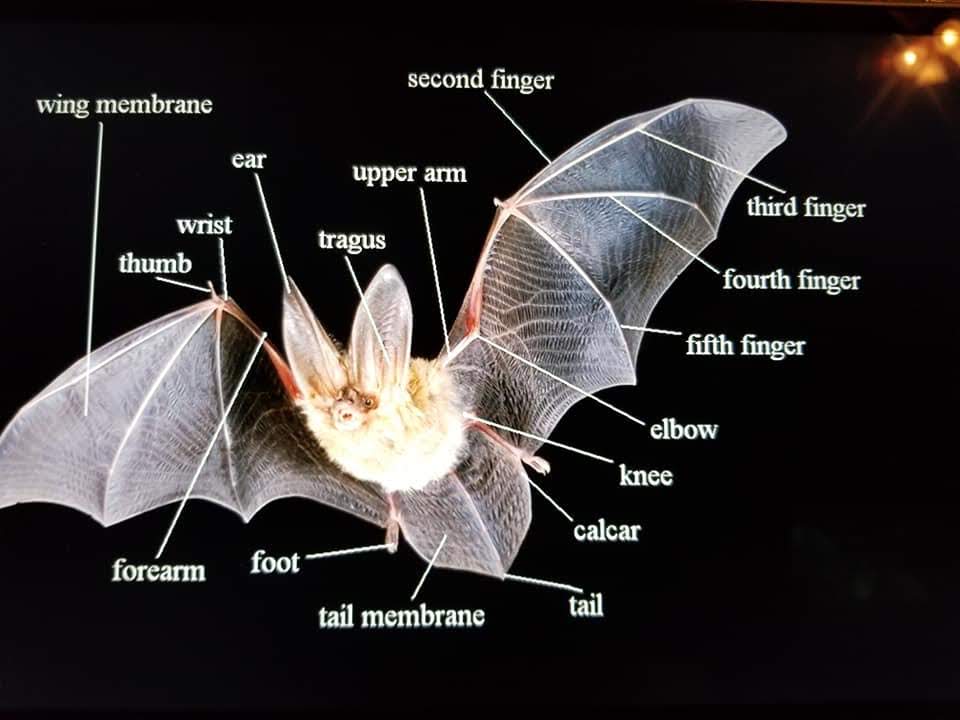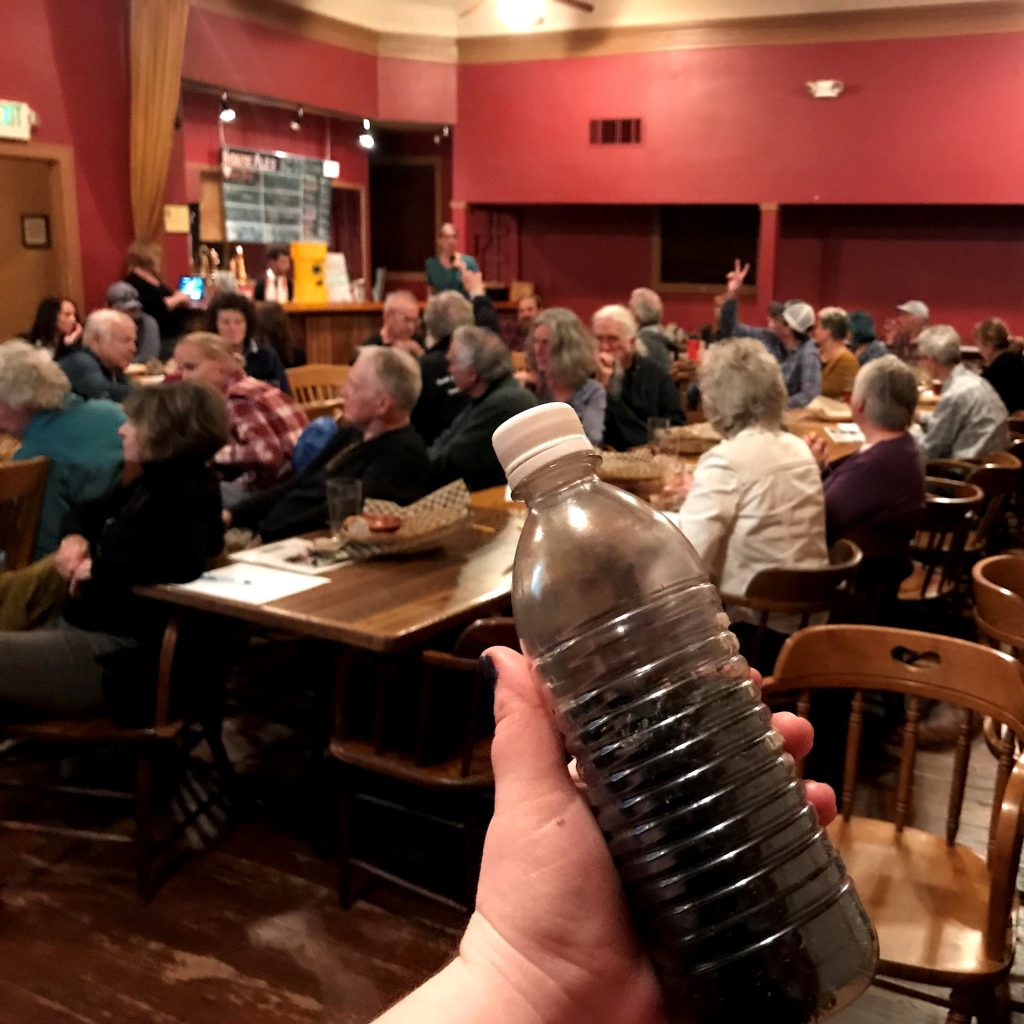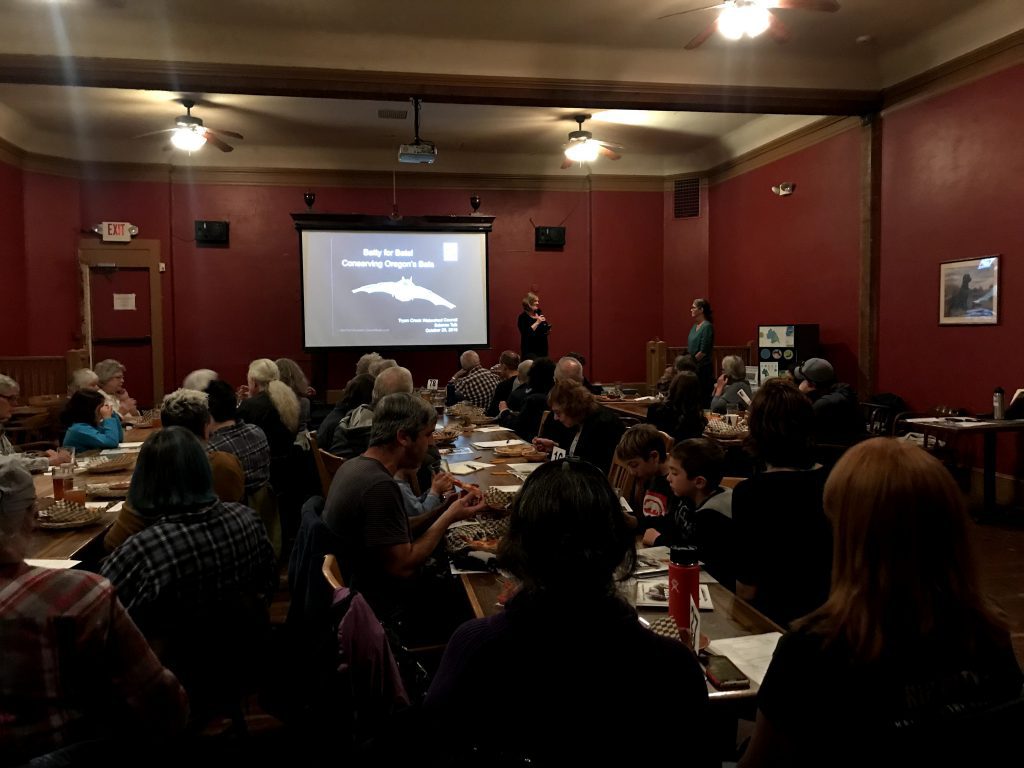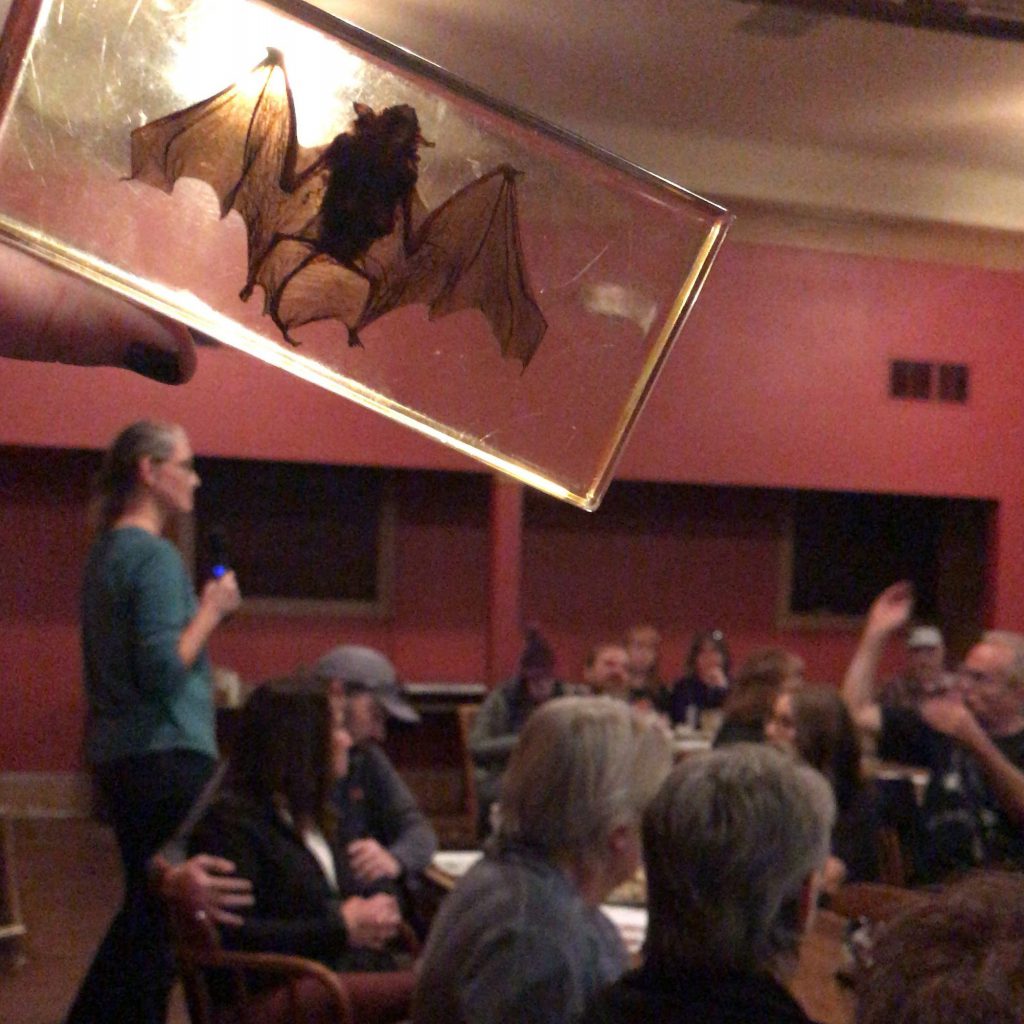Batty for Bats! Science Talk Success

What a great time we had, tapping into holiday fun with a Bat Talk at the Lucky Lab! Susan Barnes, Regional Conservation Biologist at the Oregon Department of Fish & Wildlife, busted some bat myths, impressed us with hands-on visuals, and educated us on issues bats are facing today. Did you know that bats’ eyesight is actually very good – similar to ours?
A key takeaway is that there is a seasonality to be followed in the process of relocating bats if they’re in a structure (like your attic… or pool umbrella!) you’d like to remove them from. ODFW’s website has certified Wildlife Control Operators.
A primary issue: habitat decline due to urbanization. What can you do to provide habitat? Well, for starters, embrace standing dead trees: snags are great bat (and woodpecker, etc.!) habitat! Three-chambered bat boxes are recommended by ODFW if you have a sunny spot you’d like to create habitat for them in.
With over sixty attendees, and attendees of all ages wearing on-theme bat shirts, the love for our only true flying mammals was felt throughout the room.
Check out more photos here. Thank you to Susan for sharing her time and knowledge, to the Lucky Lab for hosting and hydration, and thank you to the Bureau of Environmental Services’ CWSP (Community Watershed Stewardship Program) for funding this event! Learn more about bats at Bat Conservation International.





